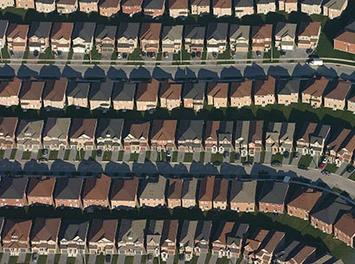A poll by highly respected IPSOS, released by BILD-GTA shows a strong awareness of the GTA’s severely unaffordable housing. In the 15 years from 2004 to the last pre-pandemic year of 2019, the median detached house price rose more than 160% (inflation adjusted), about 5.5 times the rise in the Consumer Price Index. Obviously, something is wrong.
In the middle 2000s, the provincial government established the GTA greenbelt in which development is banned. House prices soon began a stratospheric rise, more than doubling relative to incomes by the last pandemic year (2019). This is not surprising, since virtually all markets with similarly severe affordability in our eight nation Demographia International Housing Affordability have adopted similar bans (such as Vancouver, San Francisco, Auckland, Sydney and London). These bans are associated with substantial land cost increases, often 10 or more times at their inner boundaries. As a result, substantially higher house prices can be expected where urban expansion (pejoratively called “urban sprawl”) is banned.
Meanwhile, the GTA appears to be exporting its new suburbs the province has banned. Toronto CMA lost a net 260,000 intraprovincial migrants between 2016-7 and 2021-2. That many people live in the municipalities of Kitchener or Saskatoon. The CMAs within 250 kilometers (such as Guelph, Peterborough, or Belleville) gained a net 140,000 intraprovincial migrants, according to Statistics Canada.
Toronto need not bemoan “sprawl.” Toronto has the highest urban density (the population centre, which is the continuously built up urban area) in Canada, higher than that of US leader Los Angeles one-half higher than New York, more than double urban planning icon Portland, Oregon and more than five times that of the least dense large US urban areas.
The consequences of the ban are severe. Young people are generally not able to afford the very homes they grew up in, but they were affordable to their parents. Many lower-income households have insufficient incomes to afford the higher prices and add their names to social housing waiting lists. For example, waits in the city of Toronto are over 10 years for one and two bedroom units. For most younger households, a lower standard of living is likely, for some with lower incomes a transition into poverty.
Meanwhile, Toronto’s house price increases have produced much more inequality, as home owners have gained substantially, but not those who rent. Academic research has associated rising house prices with increased inequality, both worldwide and in the US.
How can this be in Canada, which The New York Times said has richest middle-class in the world? Canada and Toronto have never been more affluent. Shouldn’t younger generations have hope for at least the prosperity of their parents?
The overwhelming majority of IPSOS poll respondents agreed (81%) that it is possible to increase the pace of housing development while taking appropriate measures to protect the environment.
While the survey found less than majority support for building in the greenbelt, they favored expanding municipal boundaries. This could be allowed outside the greenbelt, where land costs are likely to be much lower. Is this ideal? No, but it is the choice forced upon the community by current land use policy if housing affordability is to be materially improved.
Yes, longer commutes would be likely, and by car. That’s not so different from today. Already Nearly three times as many commuters use cars in the CMA as transit according to the 2016 census (six times outside the City of Toronto). This is not surprising since 4.5 times as many CMA jobs can be reached by cars in 30 minutes than transit. Further, the likelihood of more remote work seems assured to reduce future commuting, both by car and by transit. Finally, the urban expansion can be limited by requiring small lot sizes.
There is a need to restore a balance in land use policy. Both the environment and people matter. There is a need to bring the cost of land down to restore housing affordability, so that younger and lower-income resident need not flee to Guelph, Belleville or even Moncton for the houses they desire.
Priorities need to be righted. Poverty is worse than sprawl, and so is a materially lower standard of living.
Wendell Cox is a senior fellow at the Frontier Centre for Public Policy and author of Demographia International Housing Affordability. You can watch his Thinkers Corner interview session (Tackling Canada’s Housing Affordability Crisis) from September 21, 2021 here.



